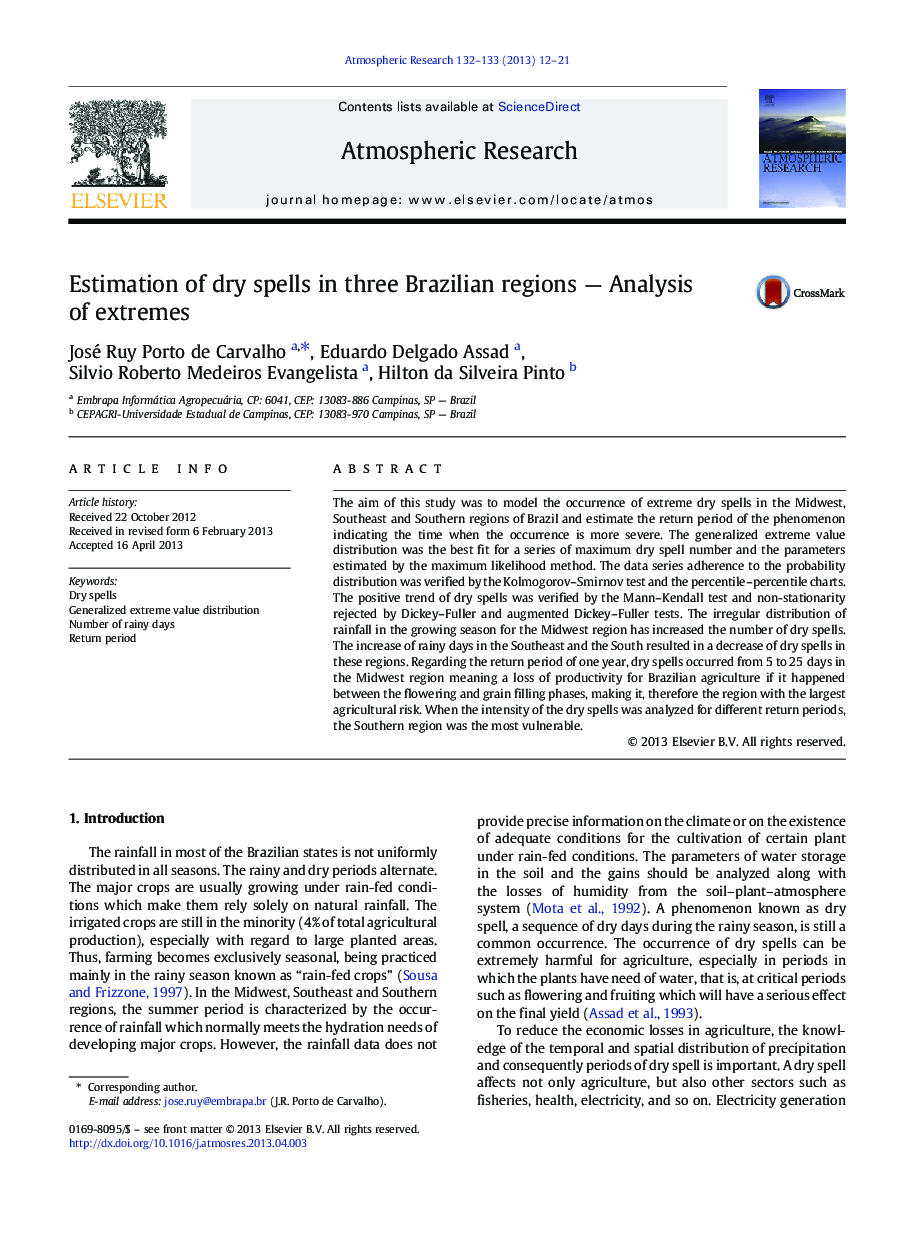| Article ID | Journal | Published Year | Pages | File Type |
|---|---|---|---|---|
| 6343783 | Atmospheric Research | 2013 | 10 Pages |
â¢The dry spell data series was fitted using generalized extreme value distribution.â¢Dry spells consisting of 5-25 days occurred for the one year return period.â¢The Midwest region has the greatest risk of loss for the return period of one year.â¢The dry spell intensity increases the vulnerability in agricultural production.â¢These results are in agreement with the IPCC analysis for other regions of the globe.
The aim of this study was to model the occurrence of extreme dry spells in the Midwest, Southeast and Southern regions of Brazil and estimate the return period of the phenomenon indicating the time when the occurrence is more severe. The generalized extreme value distribution was the best fit for a series of maximum dry spell number and the parameters estimated by the maximum likelihood method. The data series adherence to the probability distribution was verified by the Kolmogorov-Smirnov test and the percentile-percentile charts. The positive trend of dry spells was verified by the Mann-Kendall test and non-stationarity rejected by Dickey-Fuller and augmented Dickey-Fuller tests. The irregular distribution of rainfall in the growing season for the Midwest region has increased the number of dry spells. The increase of rainy days in the Southeast and the South resulted in a decrease of dry spells in these regions. Regarding the return period of one year, dry spells occurred from 5 to 25Â days in the Midwest region meaning a loss of productivity for Brazilian agriculture if it happened between the flowering and grain filling phases, making it, therefore the region with the largest agricultural risk. When the intensity of the dry spells was analyzed for different return periods, the Southern region was the most vulnerable.
